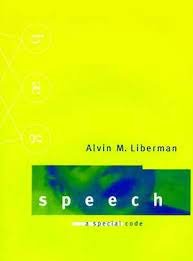Legacy: Decades of Discovery - 1990s
Katherine Harris and Frederica Bell-Berti showed that the cohesion of gestures forming certain phonetic segments (tongue and lip gestures in English /u/, for example) rests on their invariant phasing with respect to one another. This finding is consistent with the hypothesis that segments arise as units of phonetic function by integrating established gestural routines.
Continuing research begun in the 1980s, Catherine Best elaborated on the finding that infants begin life able to distinguish the sounds of many languages, but within little more than six to ten months tend to lose the capacity to discriminate some sound contrasts not present in the language spoken around them. (Intriguingly, they retain the ability to discriminate others.) She developed the “direct realist” Perceptual Assimilation Model to predict the effects of language experience on speech perception in both infants and adults.
Kenneth Pugh was among the first scientists to use functional Magnetic Resonance Imaging (fMRI) to reveal brain activity associated with reading and reading disabilities.
Philip Rubin, Louis Goldstein, Mark Tiede, and colleagues designed a radical revision of the articulatory synthesis model. Their three-dimensional model of the vocal tract (CASY) permits researchers to replicate MRI images of actual vocal tracts and the articulations of different speakers. Douglas Whalen, Goldstein, Rubin, and colleagues extended this work over the next decade to study the relation between speech production and perception.
Weijia Ni, Ken Pugh, Donald Shankweiler, and colleagues at Yale University developed novel applications of neuroimaging to measure brain activity associated with understanding sentences. With W. Einar Mencl, they were also among the first to extend this method to the study of individuals. Shankweiler, Susan Brady, Anne Fowler, and others explored whether weak memory and perception in poor readers are tied specifically to phonological deficits. Evidence rejects broader cognitive deficits underlying reading difficulties and raises questions about impaired phonological representations in disabled readers.
Alvin Liberman published Speech: A Special Code, reprinting twenty-five key Haskins papers from the past forty-five years with an introductory essay describing their intellectual origins and theoretical implications.
• 1930s
• 1940s
• 2000s
• 2010s
• 2020s
• 1970s
• 1980s
• 1990s




